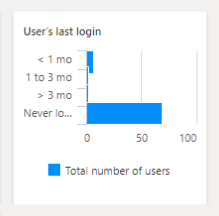We are pleased to present our November Product Management Update. A lot continues to happen at Microsoft and To-Increase. In this issue, we will start with a general update followed by an update for different product groups or topics.
Solution availability Microsoft D365FO
We publish the availability of our solutions for Dynamics 365 on this wiki page. The purpose of this page is to provide customers and partners an insight into two aspects of the To-Increase solutions for D365 FO:
- deviation from the monthly cadence (if any)
- compatibility with Dynamics 365 updates
We update this page on a monthly basis to ensure that you have the latest updates.
Advanced Maintenance and Service
Microsoft has added a new product to its Dynamics 365 portfolio last month called Asset Management. This is on the lines of the Enterprise Asset Management module—often referred to as ‘EAM’—that has been delivered by To-Increase for many years. People often ask if the two are the same and if they should switch or not.
Enterprise Asset Management is part of the broader solution delivered by To-Increase, ‘Advanced Maintenance and Service.’ This consists of five products of which Enterprise Asset Management is one.
To-Increase is committed to continuing support and developing Enterprise Asset Management as well the other products that are part of Advanced Maintenance and Service. Existing customers do not have to switch to Asset Management, and new customers have a choice; now and for the years to come.
Advanced Maintenance and Service consists of the following products as shown in the colored boxes:

Asset Management in Dynamics 365 is a near-100% version of Enterprise Asset Management. Whether it makes sense for you to switch from Enterprise Asset Management to Asset Management will depend on the functions and features that are relevant for your business scenarios.
There are other factors to take into consideration as well, including the pricing of the Asset Management module by Microsoft and migration requirements. If you want to learn more about this, contact your To-Increase representative, and we will be happy to help you.
Product engineering
Per December 1, 2019 the PLM integration will be sold and delivered as a separate product next to Product Engineering. This allows us to better position and enable further development of both products next to each other. Existing customers that use the PLM integration framework have received this as part of their Product Engineering license and can continue to use that without the need to purchase new licenses. More details on this change will be communicated via the release notes and installation guides as well in direct communication channels towards customers and partners where appropriate.
Anywhere
This month, we have two additions for Anywhere. Usually, a release contains a deployable package with application objects. It is different for Anywhere; we also rely on data content packages of the configurations for the various end-to-end scenarios that we offer. Updating the end-to-end solutions requires some manual work. We have automated most of the update tasks to make the update process as smooth as possible.
The second released feature is support for Google maps. You can now use the maps control to display a location or plan routes. This is useful for mobile solutions where your team needs to drive between different locations or when you need to calculate a distance or duration for a specific transport route.

RapidValue
This month, we have added the feature that enables the import of RapidValue records directly from any third-party placeholder, like SharePoint, as preview. If you already have a lot of detailed process documentation, you can add a link from your documentation to open the business process, activity, or requirement in Microsoft Dynamics 365 for Finance and Operations.

Retrive the link from RapidValue forms to find the correct form and record. The generated link can be used from an external application to start Dynamics 365 Finance or Supply Chain Management directly and focus on the form with the correct record.
This can help customers to slowly transition existing business documentation to RapidValue or extend process descriptions in another application with BPM features.
Security and Compliance Studio
There are several updates worth mentioning on the security and compliance studio.
On the lines of AX2012, it is now possible to use security groups to define the access permissions for users. In Dynamics 365, this is based on Azure Active Directory. However, there is no visibility within the application itself about which users are part of which group. The functionality we have been offering in AX2012 has now been implemented in Microsoft Dynamics 365 for Finance and Operations.

A second useful addition is the option to check on Segregation of Duties conflicts for stand-in users. When a user replaces another colleague during vacation, you can check for possible violations in advance. In such instances, you can decide whether to allow the replacement or not.

The third update for this release is about the last login date and time for the users. Based on the previous login, there is a chart available that offers visibility into the previous login. You can use this option to clear out users who have not been using the application for a long time. When the users are not required anymore, they can be archived to save on subscription licenses.





